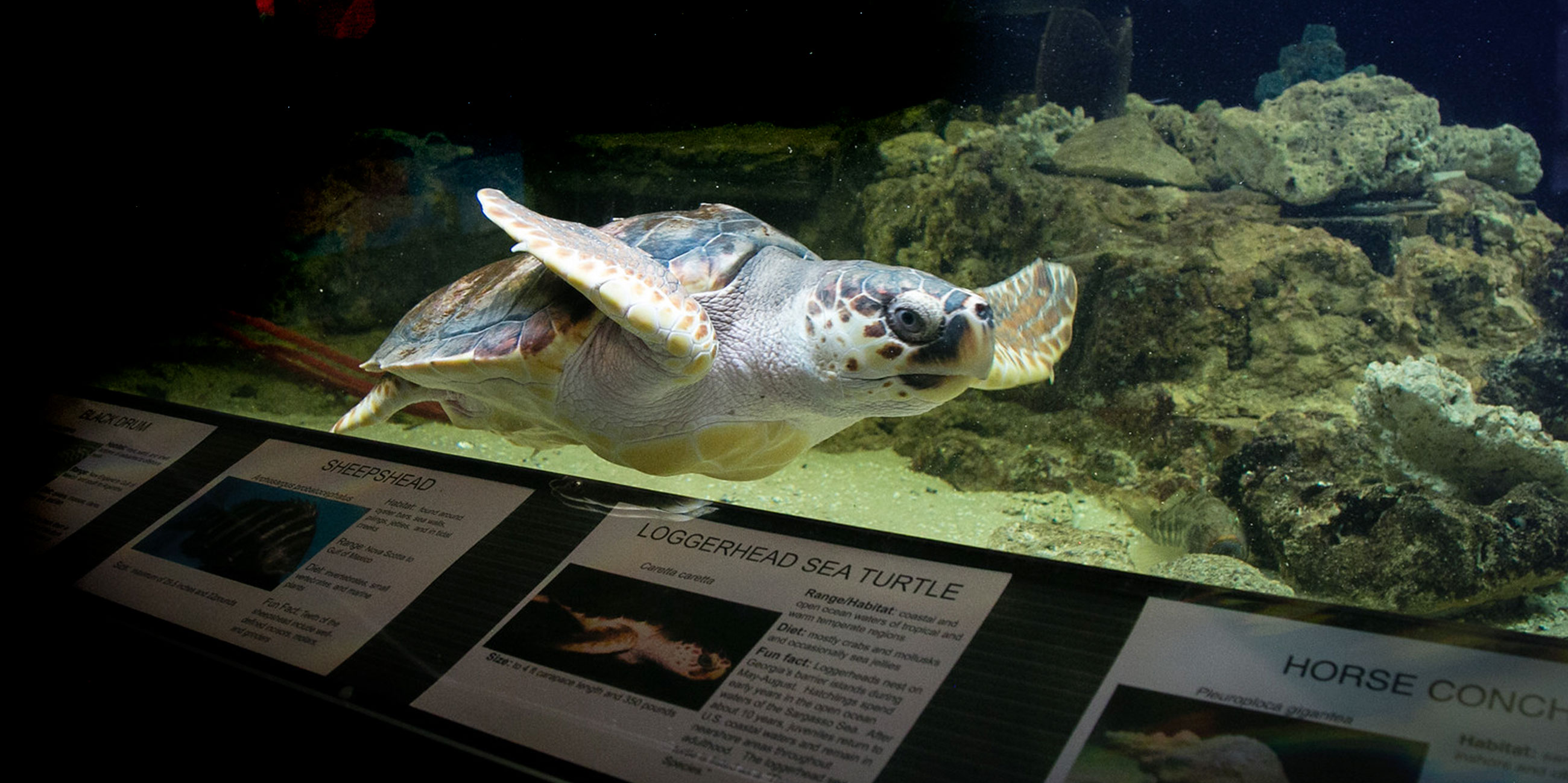By noon, Devin Dumont and Lisa Olenderski have fixed a pump that provides necessary sea water from the Skidaway River to the exhibit tanks inside the UGA Aquarium, guided a group of students on an aquarium tour and separated a pair of squabbling turtles in a pool at the entrance to the building.
That’s in addition to the daily tasks that include keeping the 16 aquarium tanks functioning satisfactorily, feeding all of the sea life and getting the facility ready for the school groups and individuals who will visit the UGA Marine Extension Aquarium and Education Center that day.
Dumont’s the only full-time troubleshooter and daily manager of the facility. Olenderski spends half of her time on that, the other half on education programming. Over the years, the two have become proficient in plumbing, electricity and animal health.
“I think it helps having people understand it’s more than just having a fish in a tank. When (the groups) come back here and see the functionality of what it takes, there’s definitely some surprise,” Dumont said. “But that’s what drives us, to impart some knowledge about what it takes to keep this whole thing going.”
Nearly 24,000 people visited the aquarium last year and another 31,564 participated in outreach programs coordinated by the education staff in Savannah. The aquarium is funded in large part by admission and program fees, and it’s up to Dumont and Olenderski to use the limited resources to not only keep all the building’s aquatic life healthy and happy but educate visitors about the Georgia coast.
Tanks have to be regularly cleaned and monitored for water quality. Pre-made filtration systems sold at the local aquarium shop are extremely expensive, so Dumont and Olenderski assemble all of the hardware, plumbing parts and various filtration components to custom fabricate filtration systems and solutions for the aquarium’s unique needs.
Then there are days when a new arrival may show up unexpectedly, a new young sea turtle that needs care or something completely different, like the injured honeycomb moray eel- native to the Pacific Ocean-that a local resident recently found in a lake. It can be like “fish tetris” trying to find a spot for every animal, Olenderski said.
“Each situation is unique,” Dumont said. “The problem-solving skills we have to employ are never routine.”
Jessica Hernandez, a Georgia Sea Grant intern, said she’d never cooked for herself before coming to the Georgia coast. Now, she chops shrimp to feed to the animals.
“I figured I’d help with feeding animals, not preparing the food, so this is an awesome experience,” Hernandez said. “Seeing the full process of taking in fish from the river in the trawl and taking them into the kitchen and preparing them to feed the other animals was just incredible.”
Behind the mechanics of keeping the aquarium humming is the core mission of education about the Georgia coast.
Education programs range from lectures for adults to summer camps where kids study native sea life. The aquarium hosts a number of groups that are there for a day or that spend the week in the on-site dormitory. Groups come from across Georgia and from out of state, including an extension group that regularly visits from the University of Kentucky.
“When we talk about our jobs to students, I try to talk about how we’re trying to inspire people to get out and care about what’s on the Georgia coast,” Dumont said.
— Christopher James, Public Service and Outreach


